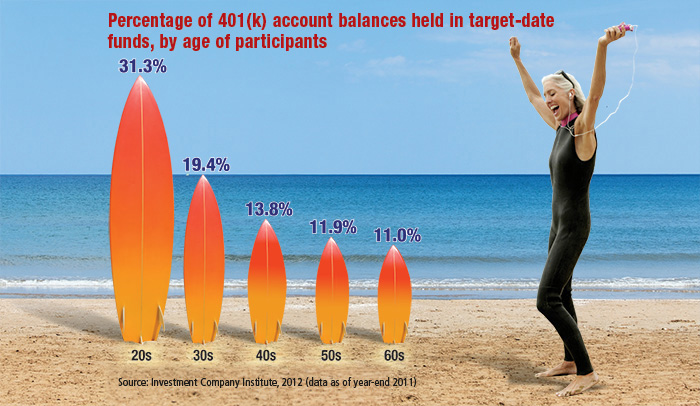At the end of 2011, more than half of all recently hired 401(k) participants owned target-date mutual funds. When a worker is auto-enrolled, a target-date fund is often the default investment for retirement plan contributions.
Target-date funds are hybrid mutual funds that generally include a mix of assets (stocks, bonds, and cash alternatives) that automatically shifts as the account holder ages.
The target date is the approximate date when an investor plans to withdraw his or her money — typically the year when he or she expects to retire (such as 2030, 2040, or 2050). The further away the date is, the greater the risks that the target-date fund usually takes. The mix of investments generally becomes more conservative as the date grows closer. The “glide path” is a formula that determines how the asset mix will change over time.
Two funds with the same target date often have different investment holdings, turnover rates, and glide paths. Therefore, an investor must look beyond the target date to evaluate whether a particular fund is an appropriate investment.
The principal value of target-date funds is not guaranteed. The return and principal value of all mutual funds fluctuate with changes in market conditions. Shares, when sold, may be worth more or less than their original cost.

Mutual funds are sold by prospectus. Please consider the investment objectives, risks, charges, and expenses carefully before investing. The prospectus, which contains this and other information about the investment company, can be obtained from your financial professional. Be sure to read the prospectus carefully before deciding whether to invest.

